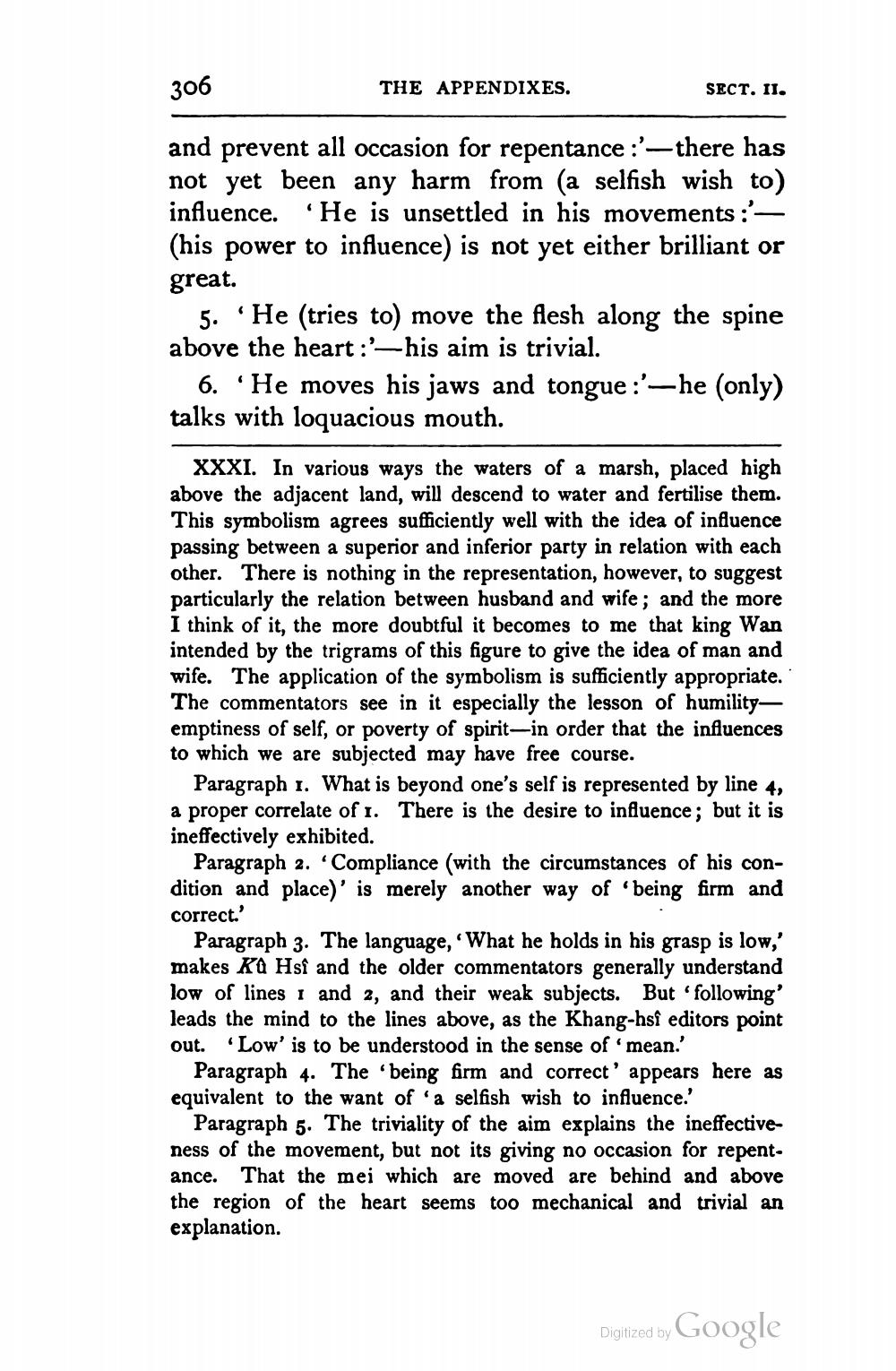________________
306
and prevent all occasion for repentance :'—there has not yet been any harm from (a selfish wish to) influence. 'He is unsettled in his movements :'(his power to influence) is not yet either brilliant or great.
THE APPENDIXES.
SECT. II.
(
5. He (tries to) move the flesh along the spine above the heart :'-his aim is trivial.
6. 'He moves his jaws and tongue :'—he (only) talks with loquacious mouth.
XXXI. In various ways the waters of a marsh, placed high above the adjacent land, will descend to water and fertilise them. This symbolism agrees sufficiently well with the idea of influence passing between a superior and inferior party in relation with each other. There is nothing in the representation, however, to suggest particularly the relation between husband and wife; and the more I think of it, the more doubtful it becomes to me that king Wan intended by the trigrams of this figure to give the idea of man and wife. The application of the symbolism is sufficiently appropriate. The commentators see in it especially the lesson of humilityemptiness of self, or poverty of spirit-in order that the influences to which we are subjected may have free course.
Paragraph 1. What is beyond one's self is represented by line 4, a proper correlate of 1. There is the desire to influence; but it is ineffectively exhibited.
Paragraph 2. 'Compliance (with the circumstances of his condition and place)' is merely another way of 'being firm and correct.'
Paragraph 3. The language, 'What he holds in his grasp is low,' makes Ku Hsî and the older commentators generally understand low of lines 1 and 2, and their weak subjects. But 'following' leads the mind to the lines above, as the Khang-hsî editors point 'Low' is to be understood in the sense of mean.'
out.
Paragraph 4. The 'being firm and correct' appears here as equivalent to the want of a selfish wish to influence.'
Paragraph 5. The triviality of the aim explains the ineffectiveness of the movement, but not its giving no occasion for repentance. That the mei which are moved are behind and above the region of the heart seems too mechanical and trivial an explanation.
Digitized by
Google




